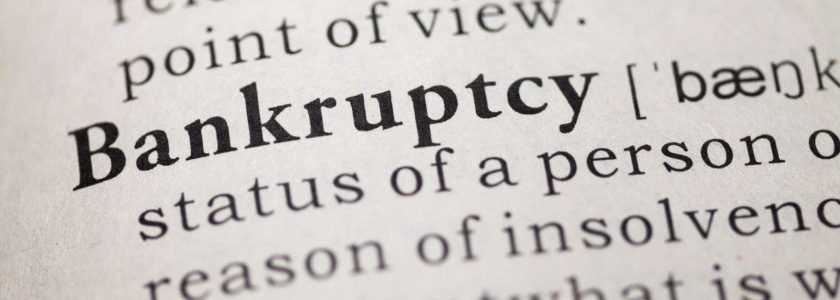
Is your phone ringing morning, noon, and night with calls from creditors who are breathing down your neck? Are you drowning in debt you cannot possibly repay? If your life has become a debtor’s nightmare then it may be time to consider putting your life back in order by pursuing Chapter 7 personal bankruptcy.
Understanding Chapter 7 Personal Bankruptcy in Ohio
Chapter 7 bankruptcy is a form of debt relief offered to individuals and married couples under the U.S. Constitution. It allows you to discharge all or part of your outstanding unsecured debts by liquidating liquid assets to repay part of what you owe.
Common debts that may be discharged include, but are not necessarily limited to, the following:
- Medical bills
- Unsecured personal loans
- Credit card debts
- Past due utility bills
- Past due rent
- Payday loans
- Certain judgments and taxes
- Auto accident claims (unless they involve an OVI or DUI)
There are certain debts that cannot be discharged in most circumstances. Common nondischargeable debts include the following:
- Child support
- Alimony
- Attorney fees in child support or alimony cases
- Debts for personal injury or death caused by DUI
- Fines and penalties for breaking the law
- Student loans (unless you can show undue hardship)
- Recent income tax debts within the past 3 years
- Debts that are the result of illegal activity such as fraud
- Debts you forget to list in your bankruptcy papers, unless the creditor learns of the bankruptcy
Once the non-exempt liquid assets are sold, the bankruptcy trustee overseeing your case will divide the proceeds among your creditors. The remaining debt is discharged.
One of the primary benefits of filing for Chapter 7 bankruptcy is that it immediately stops all debt collection efforts. This is referred to as an “automatic stay” and it will stop all lawsuits, foreclosure actions, and repossession attempts against you by creditors. The stay also applies to things like wage garnishments and harassment by phone call or letter. In addition, new lawsuits may not be filed while you are in the process of undergoing Chapter 7 bankruptcy.
Liquid Assets and Bankruptcy Exemptions in Ohio
In a Chapter 7 bankruptcy, your property is considered a means of paying off your creditors. Your property and possessions are considered liquid assets, or assets that can be converted into cash. The properties turned over to the court to be liquidated and then distributed among your creditors are known as non-exempt assets. Assets that are protected against being liquidated in a bankruptcy are exempt assets. The State of Ohio has a list of assets that can be made exempt in a bankruptcy case. Notably, Ohio is one of the states that does not allow you the option of choosing the federal bankruptcy exemptions. You may still use federal nonbankruptcy exemptions in addition to the state bankruptcy exemptions.
The most common bankruptcy exemptions used in Ohio are:
- Value in one parcel of real or personal property that is used as a residence of up to $125,000
- Cash on hand or deposit of up to $400
- 75% of wages
- IRAs and Roth IRAs of up $1,283,025
- One burial plot
- Household goods up to a value of $10,775 with no item valued at more than $525
- $3,225 dollars in value in one motor vehicle
- Alimony or child support
- Tools of the trade up to a value of $2,025
- Private pensions and tax exempt retirement accounts
- Disability assistance
- Vocational rehabilitation benefits, workers compensation, crime victim compensation and unemployment benefits
- Wildcard value of up to $1,250 in any property
- Jewelry up to $1,350 in value
- State teacher retirement
- Health aids
If you are a married couple filing a joint bankruptcy, the exemption amount may be doubled. This means each member of the couple may individually claim the full exemption amount for any property they own that is covered by Ohio exemptions. Properties secured by loans can be kept through the bankruptcy as long as you are current on payments and elect to continue to make payment. You must sign a “reaffirmation agreement” and the debts covered cannot be wiped out by bankruptcy for a period of eight years. You may selectively reaffirm debts.
Once non-exempt assets have been distributed, the remaining debt is discharged. You are not liable for discharged debt and creditors cannot pursue collection. To find out exactly what is and is not covered by exemptions in Ohio, you should contact a knowledgeable Ohio bankruptcy lawyer in order to get a full and thorough rundown of Chapter 7 bankruptcy.
How Do I Qualify for Chapter 7 Bankruptcy in Ohio?
The first thing you must find out is if you pass the means test in Ohio. The means test will calculate whether or not you have sufficient income to repay some of your debts. If your disposable income is found to be insufficient then you may qualify for Chapter 7. If you have filed for bankruptcy before, you will have to wait 8 years before you can file again. You will also have to complete debtor’s education through an approved credit counseling agency.
When it comes to bankruptcy, it is important to consult with an experienced Ohio bankruptcy attorney to determine whether bankruptcy is the right choice and what kind of bankruptcy is correct for your situation. At DannLaw, we have the expertise in bankruptcy law to make the right call regarding your bankruptcy case. Contact us today for a free case evaluation in order to discuss whether Chapter 7 bankruptcy is right for you.